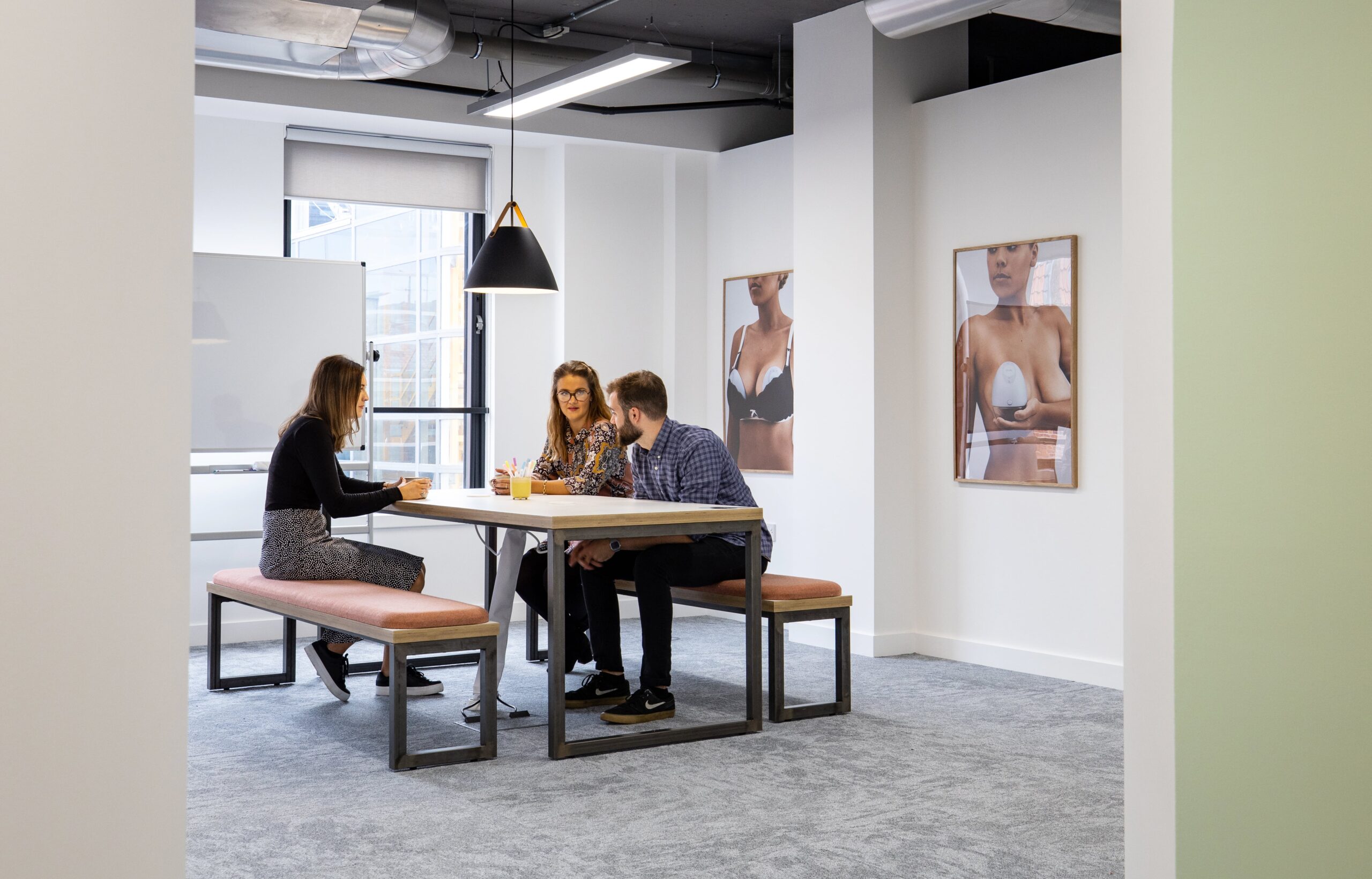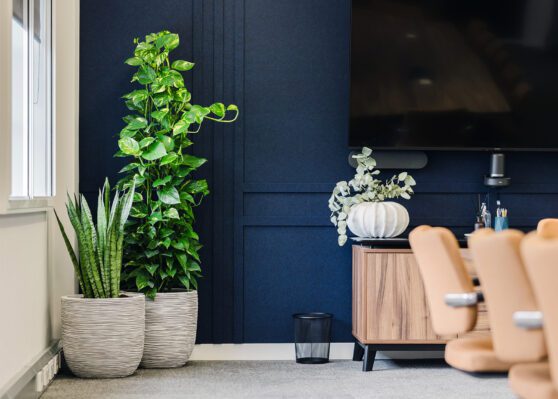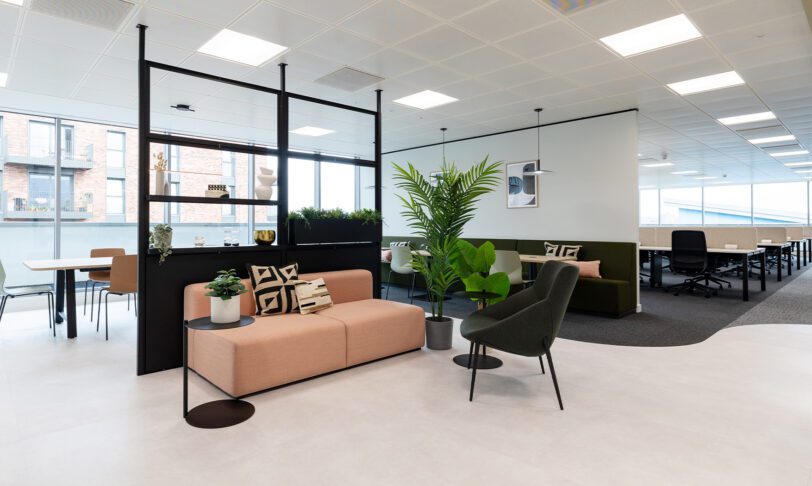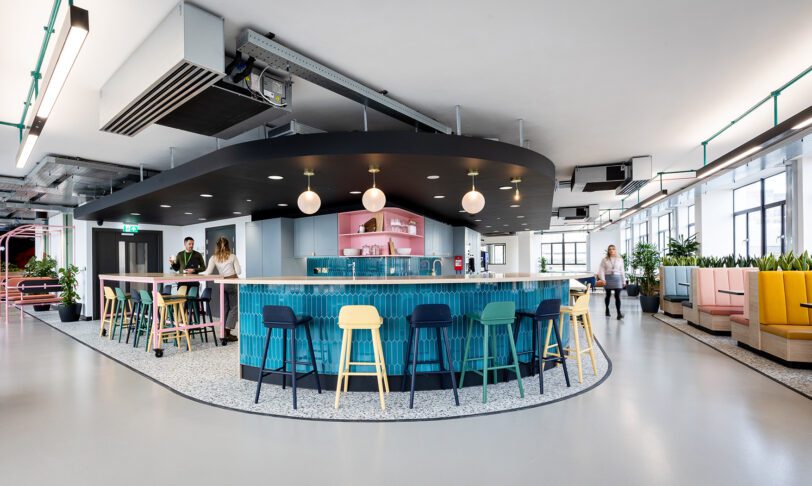How to support menstruation, pregnancy and menopause in the workplace
Despite affecting 50% of the population, discussions around menopause, menstruation and pregnancy are often fraught with feelings of discomfort or embarrassment. For instance, it’s only been in the last few years that adverts for sanitary products have started using red liquid – previously deemed too graphic and unpalatable.
There has been a similar reluctance to discuss how these issues affect people’s working lives. The first large-scale study on experiences of working during menopause was only conducted just over 10 years ago. Unfortunately, in 2024 there is still a paucity of frank discussions about menopause in the workplace, with those experiencing common symptoms such as hot flushes and brain fog often attributing them to ailments such as asthma or arthritis.
Beyond the statutory basics
When it comes to accommodating menopause, pregnancy and menstruation in the workplace, many companies will limit themselves to providing statutory basics like medical and parental leave.
However, each of these stages brings physical and emotional challenges that can significantly impact work performance, mental health, and career progression. While pregnancy accommodations have become more common, workplace support for menstruation and menopause often lags behind, leaving many women to navigate symptoms in silence.
According to healthcare provider Simplyhealth, 23% of working women have considered quitting due to the impact of menopause or menstrual symptoms at work, while 87% of working women want their employer to be more supportive when it comes to women’s health.
Strong case for supporting women’s health
There’s obviously a strong business case for supporting these women: talented, experienced employees are being pushed out of the door at the height of their careers, resulting in a loss of operational knowledge, increased recruitment costs and lack of female leadership.
It’s a subject we explore with menopause activist Claire Lowson on our podcast Thrivalism: you can listen here.
In October 2024, the UNI, an international workers’ union addressed the issue, releasing manuals for pregnancy, menstruation and menopause policies targeting trade unions, employers and workers. The union has called for conversations on these topics to become current in the workplace. While many people may feel uncomfortable discussing their personal reproductive health, the UNI’s generalised suggestions provide food for thought.
In this article, we’ll sum up what the UNI recommends, how UK law supports affected workers, and how office design can help you to provide a supportive workplace for pregnant, menstruating, perimenopausal and menopausal people.
How do UNI’s trade union manuals address menstruation, maternity and menopause in the workplace?
The UNI is calling on trade unions to appeal for explicit agreements with employers regarding menstruation, maternity and menopause. They want employers to commit to equal opportunities and recognition for what has been dubbed the “3 Ms” in health and safety assessments.
The organisation feels that education and consultation are central to accommodating the needs of these employees. It suggests measures ranging from flexible working to ensuring that uniforms or PPE are suitable for everyone. For example, loose, breathable clothing will offer greater comfort to all workers – particularly those experiencing discomfort during menstruation, pregnancy, and menopause. Based on survey results, its manuals stipulate that employers should pay particular attention to the accessibility and design of sanitary facilities.
The most important takeaway to bear in mind: the UNI is calling for an end to discrimination against people based on their natural reproductive cycles as well as support to improve workplace wellbeing.
What should people expect from the workplace in terms of accommodating menstruation, maternity and menopause?
Pregnancy
Pregnancy discrimination in the workplace is illegal, as specified in the Equality Act (2010). According to recent research, one in five HR professionals say that pregnancy reduces chances of progression and promotion. The same survey found that 23% of women reported being actively discriminated against when they were pregnant or returned from maternity leave. This indicates a need for workplace policies and initiatives to consciously combat bias and create a fair environment for pregnant employees.
As an employer who values gender equity in the workplace, you can do more than what the law specifies. The Health and Safety at Work Act requires employers to make reasonable accommodations for pregnant employees. For example, they may modify their duties or offer alternate roles to safeguard their health and safety.
Menstruation and menopause
Menstruation and menopause are not explicitly mentioned in UK law, but the Equality Act offers implied protections. For example, when people with ovaries are upset at work, it can sometimes be attributed to PMS (premenstrual syndrome) or, among older women, menopause. Although most are aware that hormonal changes can cause mood swings, adopting a hostile or dismissive attitude toward them constitutes discrimination.
Other reproductive health issues should also be considered. People living with endometriosis experience extreme discomfort during menstruation. Their need for time off would be protected under the Employment Rights Act. Endometriosis affects 10% of people who menstruate and employers should respond in the same way as they would react to any other medical condition.
Furthermore, people experiencing menopause symptoms may have sleepless nights from time to time as they alternate between night sweats and chills. Although the law primarily requires employees to consider health and safety and overtired employees may be at risk, you can do more. For example, although it’s not a legal requirement, your internal policies can allow for flexible working hours or sick leave to give sleep-deprived employees time to rest and recover.
Sanitary facilities
Health and safety regulations specify that sanitary facilities must be clean and accessible, allow for adequate employee hygiene, and that gender-neutral facilities should have lockable doors. We’ll get back to this topic when we take a closer look at inclusive workplace design and some of the features you can offer to help everyone feel as comfortable as possible at work.
The UNI found that many people are required to remain at specific workstations throughout the day. In some instances, breaks were timed or people had to request permission to use the toilet. Making people wait an unreasonable amount of time before they can use bathroom facilities could amount to a health and safety issue. If people are penalised for time spent attending to personal hygiene, that could also represent a breach of the Equality Act.
In certain roles, for example, receptionists, someone must be manning the fort at all times. Ensuring adequate backup means people can attend to their physical needs when required. Additionally, if they are experiencing distressing symptoms, they should be allowed private time to recover their composure.
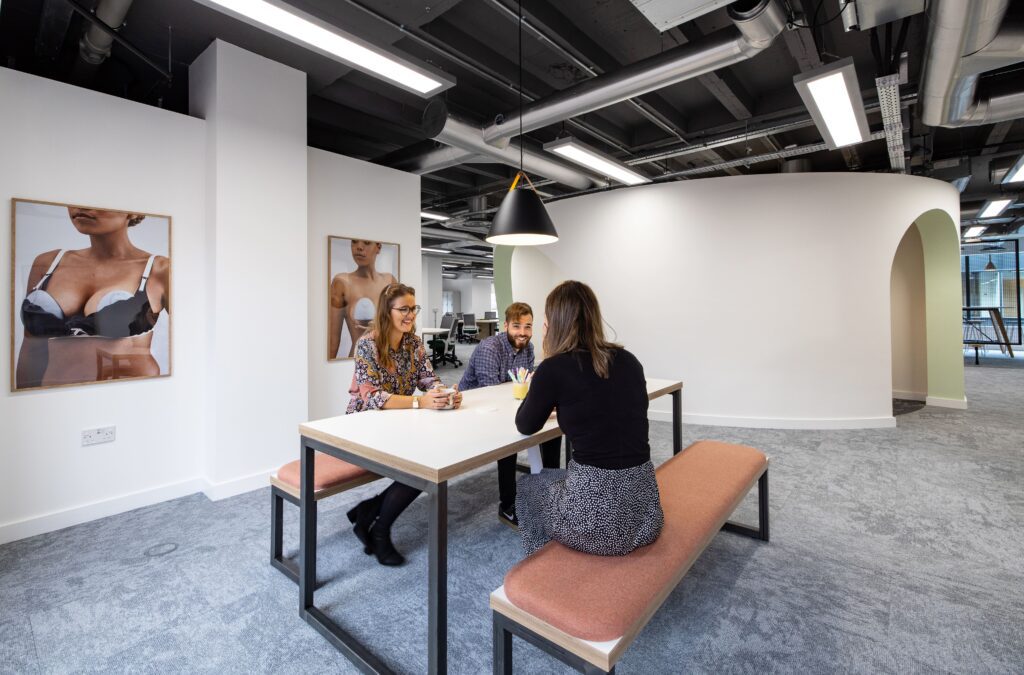
Understanding the gender gap in workplace design
In recent years there has been more focus on how many products and services are designed by assuming men and male bodies as the default, and the implications of this type of gender bias. Great examples of this can be found in the book Invisible Women: Exposing Data Bias in a World Designed for Men.
Many workplace designs fail to take the needs of all genders into account. For example, gratings can be difficult for people wearing light footwear or heels to cross, and exposed staircases and glass floors are far from ideal for people wearing skirts, dresses, or saris.
Design assumptions based on “averages” often fail to take everyone into account. A classic example of this is rules regarding acceptable workplace temperatures, which were initially set in the 1960s when offices were often male-dominated. Research shows that women would be less comfortable at these temperatures owing to metabolic differences (for more of a deep dive into this subject you can check out our guide to ideal office temperatures).
The onus is on companies to offer inclusive workplaces that consider everyone’s wellbeing and comfort while also addressing specific needs. Fortunately, this opens the door to building more innovative and interesting spaces – an opportunity and challenge most workspace designers relish and a defining feature of our work in forward-thinking office designs and fit-outs.
Supporting menopause, menstruation and maternity with workplace design
It bears repeating that workplace design features that support menopause, menstruation and maternity help create a better environment for everyone. You’ll likely find that all your employees are enthusiastic about prioritising wellbeing, comfort and personal dignity through design.
Menopause and workplace design adjustments
As most people experiencing menopause will agree, the lighting and ambient temperatures they need to be comfortable won’t always suit all of their workmates. At the same time, they may be reluctant to mention that they’re uncomfortable and wouldn’t like adjustments that suit them to affect their colleagues unduly. Then, there’s fatigue and menopause-related stress to consider. Simple solutions can help.
Desk space and adjustable workstation lighting
Give your employees experiencing symptoms of menopause the unspoken support they need. Simply providing enough desk space and a power outlet that will accommodate a fan will help people living with hormonal fluctuations feel more comfortable. Simple screens will help to keep the breeze away from co-workers who don’t want it. The same goes for individualised workspace lighting, a feature that almost all your employees will thank you for. After all, even eye colour can affect preferred lighting conditions.
Private pods: benefits for all
If you’d like to take this to the next level, access to private work pods that keep the user in control of the environment will help people experiencing menopause to be more comfortable and productive. They’re also great for anyone who needs a little quiet work time to minimise stress or a calm, distraction-free environment to get things done, so everyone benefits.
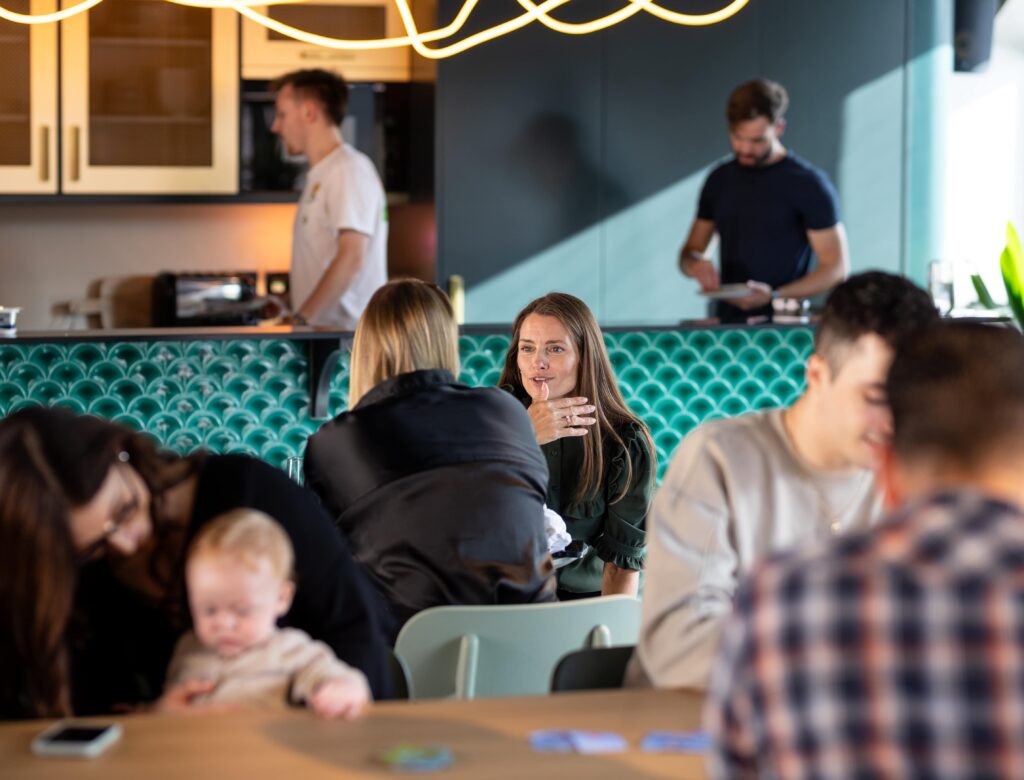
Accommodating pregnancy in the workplace with office design
To say that pregnancy can be uncomfortable is quite a glaring understatement. Like those experiencing menopause, pregnant people will be thankful for access to private workspaces and recovery areas where they’re in control of the environment. Other office design features to help them will also benefit the rest of your workforce. Here are some ideas:
Adjustable-height desks and workstations
Being cramped into a single posture all day long isn’t good for anyone, and it’s especially uncomfortable during pregnancy. Desks that allow people to work while seated or standing help to solve the problem. This offers individualised comfort for everyone, and there’ll be fewer people with lower back pain from hours spent behind a desk. Better yet, go all out with a flexible approach to office design that allows people to choose their ideal workspaces for different tasks.
Ergonomic office furniture
Poor workplace ergonomics causes fatigue, aches, and pains that affect all workers – not just those who are pregnant. Ergonomic office design begins with a risk assessment. Next, it seeks ways to combat pain, fatigue, and work-related injuries. Countless studies show that good workplace ergonomics help people be more productive and reduce absenteeism, so your investment will be worthwhile in every way.
Encourage regular, low-impact movement
Whether it’s a dedicated area for wellbeing, a gym, or just a private room, having space to stretch and do a little low-impact exercise will help employees relieve physical and psychological stress. Once again, this combination of workplace policy and facilities improves productivity and benefits all your employees. As for pregnant people, staying active not only helps to reduce aches and pains but prepares them for easier labour and childbirth.
Office design guidance for menstruation
Menstruation doesn’t prevent most people from working well, but it can lead to self-consciousness and varying levels of pain and discomfort. It’s important to remember that not everyone who menstruates identifies as a woman, so offering a combination of privacy and inclusivity is key. This is especially important when designing toilets and bathroom facilities. A little consideration can go a long way, and there are several things to bear in mind.
Inclusive and accessible restroom facilities
A study published by Rutgers University found that gender-neutral bathrooms with private cubicles promoted feelings of inclusion and safety across genders. Some organisations are hedging their bets, offering both gendered and gender-neutral facilities. Whatever your approach may be, acknowledging your people’s menstruation-related needs by offering accessible, gender-neutral facilities will be a big help.
Sanitary facilities offering privacy and a safe place to keep clean during menstruation are important to your employees’ confidence. Discreet facilities for the disposal of sanitary products are a basic requirement but you can do much more to help, such as ensuring bathrooms have shower facilities with enough space for people to comfortably change clothes.
Seating choices
When menstrual flow is heavy, employees may feel nervous about possible damage to office furniture upholstery. Offer seating options with wipe-clean surfaces for those who may feel more confident when using them.
Of course, seating choices are a matter of personal preference, and explicitly stating your reasons for offering this option will likely be considered inappropriate. However, we’re strong advocates of offering people a choice of workspaces and furniture options based on their own needs and requirements.
Spaces for employees experiencing discomfort or menstrual cramps
There are many circumstances in which a rest area can help employees overcome temporary discomfort. For example, a person with a headache may need a little rest while they wait for pain medication to take effect. People experiencing mild to moderate menstrual cramps will also be thankful for a little respite. Provide opportunities for privacy and adjustable lighting, and consider offering access to a heating pad for muscle cramps and backache.
Additional features to combat stress and fatigue
Stress is often the trigger for discomfort in the workplace, and people experiencing pregnancy, menopause or menstruation aren’t the only ones who occasionally feel very stressed out at work. Today’s employers know that stress is antithetical to any meaningful or sustainable type of productivity. Here are a few examples of how office design can help to lower those stress levels.
Colour schemes
As we explore in our guide on the role of colour in workplace design – the right shade can go a long way in creating a more tranquil environment. That’s not to say that your office has to be bland or clinical! It just means you might want to use more vibrant and stimulating colours as accents rather than having them dominate the overall palette.
Lighting
Although office lighting design is very important for wellbeing, a survey revealed that about 40% of people have to deal with uncomfortable lighting while at work. Common complaints include flickering light and overly dim or bright lighting, and if people are already experiencing tiredness because of pregnancy, menopause or menstruation, the effects of poor lighting will be exacerbated even further.
Decent lighting is ultimately an investment in productivity. The aim is always to provide an abundance of natural light, but we understand that this cannot always be achieved. Fortunately, there are lighting technologies that mimic natural light very well and allow for individualised adjustments.
Biophilic design
Another great stress reliever, biophilic design is a hallmark of many of our designs. We love bringing natural elements into our office designs, and not only because they look great. Being near plants, hearing the sound of water, and enjoying the beauty and texture of natural materials like wood or stone works wonders as a stress reliever. There’s even evidence that it helps people to be more productive at work: once again, it’s an all-round winner.
Private rooms
We’ve already mentioned private pods as workspaces, but if there’s enough space in your office, a dedicated recharge room is a decided advantage. Sometimes, people need to let off some steam in private. For example, many people who are experiencing hormonal fluctuations or high levels of stress report feeling tearful at work. Being able to take a few moments to vent and recharge in a pleasant, private space will mean a lot to them.
Try to position it so that the people who use private rooms don’t have to run a gauntlet of desks and eyes at a moment when they may be feeling particularly vulnerable. It’s worth considering soundproofing in several areas of your office, and this is one of them.
At Interaction, we’re constantly seeking new and innovative ways to support people and their wellbeing through office design. Interested in working with a leading office design and build company to create inclusive, supportive and sustainable spaces? Reach out to us today via phone, email or by scheduling a chat with Charlie, Interaction’s relationship manager.
Additionally, if you’d like to get industry-leading workplace insights and updates – we’d love for you to sign up to the Interaction newsletter or check out our free downloadable whitepapers.
